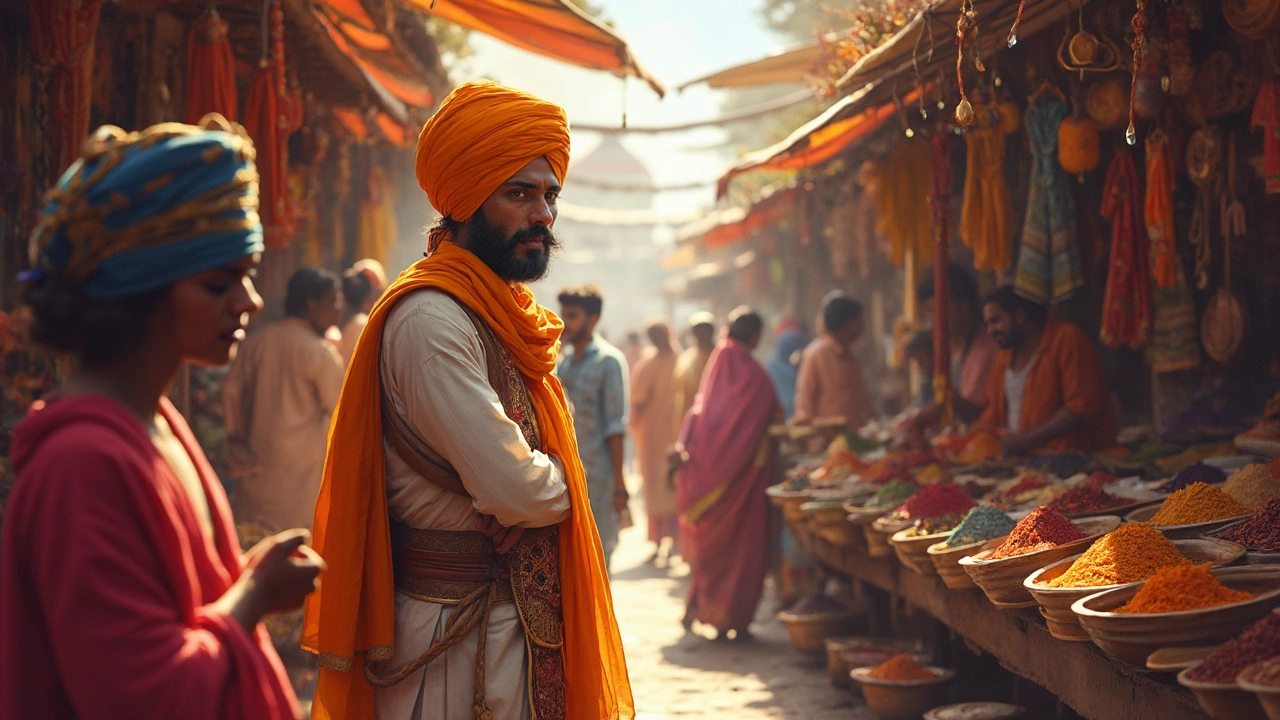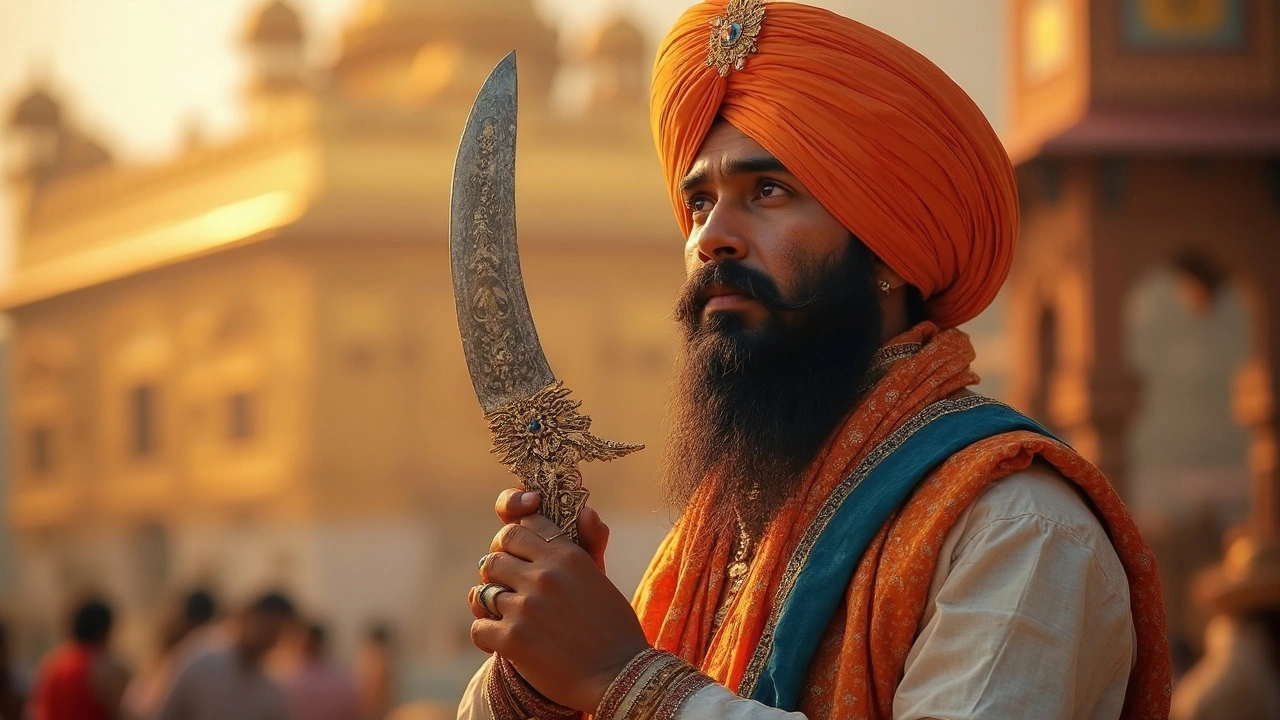Sikh Traditions: A Simple Guide to Culture and Jewelry
If you’re curious about Sikh life, you’re in the right spot. Sikh traditions are a mix of everyday habits, big celebrations, and special pieces of jewelry that tell a story. Below you’ll find the basics you need to know, plus a quick look at the most common accessories.
Key Customs Every Sikh Follows
First, every Sikh starts the day with a prayer called Nitnem. It’s a short set of verses that help set a calm tone. Most families keep a small prayer book on a shelf and read together before breakfast.
The next big tradition is the community kitchen, or Langar. Anyone can walk in, sit on the floor, and share a simple vegetarian meal. No money, no tickets – just a free, shared plate. It’s a way to practice equality and serve others.
When it comes to festivals, the most famous one is Vaisakhi. It marks the start of the Sikh new year and the day Guru Guru Gobind Singh started the Khalsa. People dress in bright colors, march in processions, and listen to kirtan (spiritual songs). If you’re invited to a Vaisakhi gathering, bring a small, respectful gift – a box of sweets works well.
Marriage in Sikhism also follows clear steps. The ceremony, called Anand Karaj, lasts four rounds around the holy book, the Guru Granth Sahib. Each round represents a promise: love, respect, loyalty, and honesty. After the vows, the couple often receives a small gold or silver chain as a symbol of their new bond.
Jewelry and Symbolic Pieces in Sikh Life
Jewelry isn’t just decoration; it’s a sign of faith. The most recognizable piece is the kara – a plain steel or silver bangle worn on both wrists. It reminds the wearer of the unbreakable bond to God. The kara is simple, sturdy, and never has any ornamentation.
Another common item is the kesh (unshorn hair) covered by a turban or a small cap called a dastaar. While not jewelry, the turban is treated with the same respect as a precious accessory. Some families lock a tiny silver pin into the turban to keep it snug, and that pin becomes a family heirloom.
For special occasions, many Sikhs wear a thin gold chain with a small khanda pendant – the two swords and circle that appear on the Sikh flag. The pendant is usually kept close to the heart, reflecting courage and spirituality.
If you’re buying a gift for a Sikh friend, a sturdy kara or a modest gold khanda pendant is a safe bet. Avoid overly flashy designs; the focus is on meaning, not sparkle.
Every piece of Sikh jewelry ties back to a core value: honesty, equality, and devotion. Whether it’s a simple steel bangle or a modest gold chain, the item serves as a daily reminder of those principles.
That’s the quick rundown of Sikh traditions you’ll see most often. From daily prayers and community meals to meaningful jewelry, each practice reinforces a sense of belonging and purpose. Keep these basics in mind, and you’ll feel right at home the next time you’re invited to a Sikh gathering.
Understanding Kirpan: Perspectives Across Nations
The kirpan is a ceremonial dagger integral to Sikh traditions, yet its acceptance in public spaces varies across countries. While some nations embrace it as a symbol of religious freedom, others struggle with security concerns. This article explores how different countries approach the kirpan, highlighting cultural significance and legal perspectives. Whether you're a traveler or simply curious about global cultures, understanding these viewpoints can be enlightening.
Exploring the Significance and Traditions of the Kirpan
The Kirpan is more than just a symbol; it represents the rich spiritual and cultural traditions of Sikhism. This article dives into the rituals and blessings tied to the Kirpan, offering insights into its role as a spiritual tool and symbol of courage in Sikh communities. Readers will learn about its historical roots, its everyday significance, how it's integrated into Sikh customs, and the ethical values it embodies.
Understanding the Kirpan: One of the Five Ks of Sikhism
The Kirpan is an important symbol in Sikhism, representing the commitment to justice and protection. This article explores the significance of the Kirpan as one of the Five Ks, along with its historical context and modern relevance. Readers will learn why the Kirpan is an integral part of Sikh identity and how it is used in daily life. By demystifying this sacred item, we hope to foster better understanding and respect for Sikh traditions.
Understanding Kirpan: Can Non-Sikhs Wear It?
The kirpan, a ceremonial dagger, is an important symbol of faith for Sikhs around the world. While it is traditionally worn by baptized Sikhs, questions arise about whether non-Sikhs can wear the kirpan. This article explores the religious and cultural nuances surrounding the kirpan, offering insights into its historical significance and the perspective of Sikh communities. Find out what considerations and legal aspects come into play for those outside the Sikh faith interested in carrying a kirpan.







